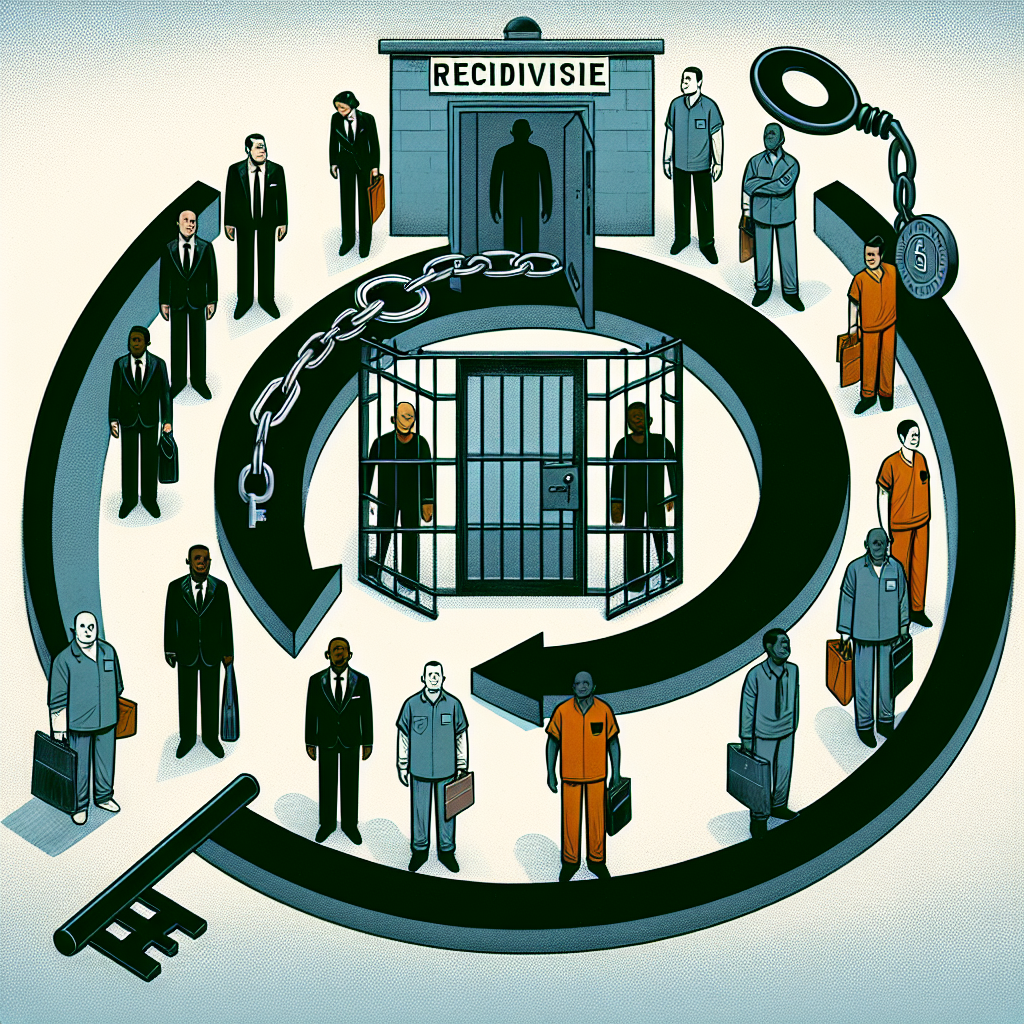
Introduction
Imagine a revolving door—a pathway of repetition that echoes the struggles of many who find themselves ensnared by the criminal justice system. Recidivism—where offenders return to crime after serving a sentence—remains a pressing issue, affecting not only individuals but also communities and the broader society. Understanding recidivism: the key factors that keep offenders returning is crucial for addressing the cycle of crime and imprisonment.
While society often views recidivism through a lens of judgment, it is vital to realize that many underlying factors contribute to this phenomenon. This article aims to illuminate those factors, providing valuable insights that can inspire change and drive reforms.
The Severity of the Recidivism Problem
Current Statistics and Trends
According to the Bureau of Justice Statistics (BJS), nearly 68% of released prisoners are arrested within three years, while 77% are arrested within five years. These figures underscore the urgency of understanding recidivism: the key factors that keep offenders returning.
| Time After Release | Percentage Re-Arrested |
|---|---|
| 1 Year | 49% |
| 3 Years | 68% |
| 5 Years | 77% |
This data highlights that traditional systems of punishment are often inadequate. The lack of effective rehabilitation programs means that the cycle continues, affecting families and communities.
Case Study: California’s Criminal Justice Reform
California has witnessed a significant shift in approach over recent years. The passage of Proposition 47 in 2014 downgraded certain nonviolent offenses, allowing individuals better access to rehabilitation. As a result, recidivism rates dropped by 20% in Los Angeles County. This case illustrates that understanding recidivism: the key factors that keep offenders returning not only requires acknowledgment of the issue but also innovative solutions.
Factors Contributing to Recidivism
1. Social and Economic Factors
Poverty and Unemployment
The relationship between poverty and crime is well-established. Without stable jobs and income sources, individuals may find themselves resorting to illegal activities. Research indicates that individuals coming from impoverished backgrounds face immense hurdles in finding gainful employment, thereby increasing the likelihood of re-offending.
2. Substance Abuse and Mental Health Issues
The Link Between Addiction and Recidivism
Substance abuse and untreated mental health issues contribute significantly to recidivism. Statistics show that approximately 65% of inmates meet the criteria for substance use disorders. Disparities in mental health care also mean that many individuals are released without the treatment necessary for their recovery.
3. Lack of Support Systems
The Family and Community Influence
Individuals reintegrating into society often lack a stable support system. Families may struggle with their own issues, leading to an environment not conducive to rehabilitation. Community resources, or the lack thereof, can also play a significant role in an individual’s capability to adjust post-incarceration. A study by Stanford University found that individuals with strong family connections are 50% less likely to re-offend.
4. Education and Skills Development
The Importance of Education
Education is a powerful tool in breaking the cycle of recidivism. According to the National Institute of Justice (NIJ), inmates who participate in educational programs are 43% less likely to return to prison within three years. This statistic reinforces the notion that understanding recidivism: the key factors that keep offenders returning involves investing in education and skill development.
5. Sentencing Policies
Mandatory Minimum Sentences and Their Effects
Mandatory minimum sentencing laws often exacerbate recidivism by ensuring lengthy prison terms for nonviolent offenders. These policies can lead to increased rates of re-offending due to insufficient rehabilitation during long periods of incarceration. The need for reform in these policies is evident, emphasizing that understanding recidivism: the key factors that keep offenders returning requires addressing systemic issues in the justice framework.
Practical Solutions: Strategies for Reducing Recidivism
1. Improving Rehabilitation Programs
Success Stories
Investment in rehabilitative programs has proven fruitful. For instance, a study in Ohio showed that inmates participating in cognitive-behavioral therapy programs had a 30% reduction in recidivism rates compared to those who did not participate.
2. Employment Opportunities
Collaborations Between Businesses and Justice Systems
Businesses can play a vital role in facilitating employment for ex-offenders. Initiatives like ‘Second Chance Hiring’ programs are focused on creating pathways to employment for individuals returning from incarceration. Such collaborations can bridge the employment gap, reducing recidivism.
3. Mental Health and Substance Abuse Treatment
Integrated Treatment Approaches
Combining mental health and substance abuse treatment has demonstrated effectiveness in reducing re-offending rates. The Substance Abuse and Mental Health Services Administration reports that integrated care services can lead to significant improvements in recovery and lower rates of recidivism.
4. Family Reintegration Programs
Strengthening Family Bonds
Programs aimed at strengthening family ties can lead to smoother reintegration into society. Initiatives involving family counseling and support can aid in creating a nurturing environment conducive to rehabilitation.
5. Legislative Reforms
Advocating for Change
Advocacy for legislative reform is critical. Changes in sentencing laws, decriminalization of certain behaviors, and increased funding for rehabilitation programs can all contribute to a more just and effective system.
Conclusion
Understanding recidivism: the key factors that keep offenders returning is not merely an academic exercise; it is a critical imperative for creating a more just society. The factors contributing to recidivism range from socio-economic conditions to institutional policies, but hope is not lost.
Innovative and empathetic solutions can pave the way for effective rehabilitation, ultimately breaking the cycle of crime and incarceration. By working collectively—communities, governments, and individuals—we can foster an environment that emphasizes rehabilitation over punishment.
FAQs
1. What is recidivism?
Recidivism refers to the tendency of a convicted criminal to reoffend, thus returning to incarceration after serving time.
2. What are the main factors leading to recidivism?
Key factors include economic conditions, substance abuse, lack of support systems, inadequate education, and punitive criminal justice policies.
3. How can recidivism rates be reduced?
Reducing recidivism can be achieved through comprehensive rehabilitation programs, job training, mental health treatment, and supportive community initiatives.
4. Are there successful programs that reduce recidivism?
Yes, programs that focus on education, job training, and mental health treatment have shown considerable success in decreasing recidivism rates.
5. Why is understanding recidivism important?
Understanding recidivism is vital for developing effective policies and programs that not only aim to reduce crime but also foster a more equitable society.
By addressing these issues through a comprehensive approach, we can not only understand recidivism better but also pave the way for meaningful change in the lives of many. The path may be challenging, but reform is possible and necessary.

















